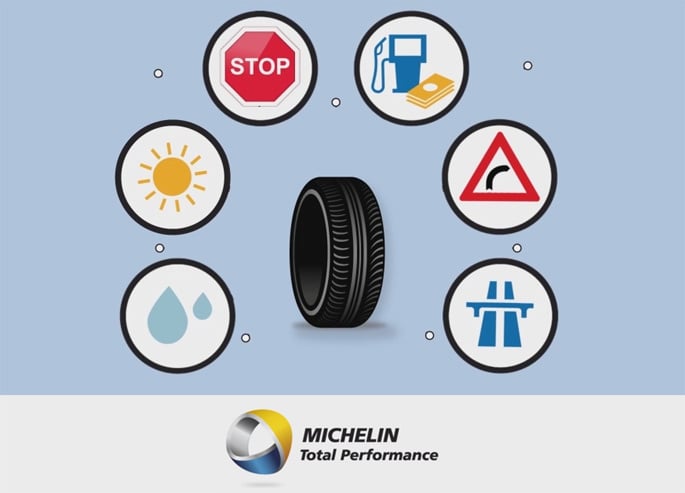

Michelin Total Performance identifies the company's global strategy of developing tires capable of simultaneously delivering superior levels of performance in the key areas of safety, fuel efficiency, grip, longevity and durability. Through Michelin Total Performance, Michelin is maximizing tire performances by developing tires that reach for higher and more sweeping levels of innovation than previously imagined.
Maximizing multiple tire performances requires overcoming challenges in design opposition.
An example is the conflict that exists in increasing tread life while reducing fuel consumption. The easiest way to extend tire life is to add more rubber to the tread, but this negatively impacts fuel efficiency as more rubber means more weight and greater rolling resistance.
Dry and wet grip performance is another example of design opposition. For dry conditions, it's optimal to have as much tread rubber in contact with the road as possible, as a slick tire does in racing. Conversely for wet conditions, it's necessary for tires to use patterned blocks and ridges to evacuate water and break up the surface film, allowing the rubber to grip the pavement to improve wet road handling and stopping distances.
Michelin is committed to constantly improving all tire performance factors together rather than being easily satisfied with just doing well on one at a time — a challenging feat that Michelin achieves in unique ways through its innovative technologies. Resolving these conflicts with minimum sacrifice and achieving optimal tire performance exemplifies Michelin Total Performance.
No comments:
Post a Comment